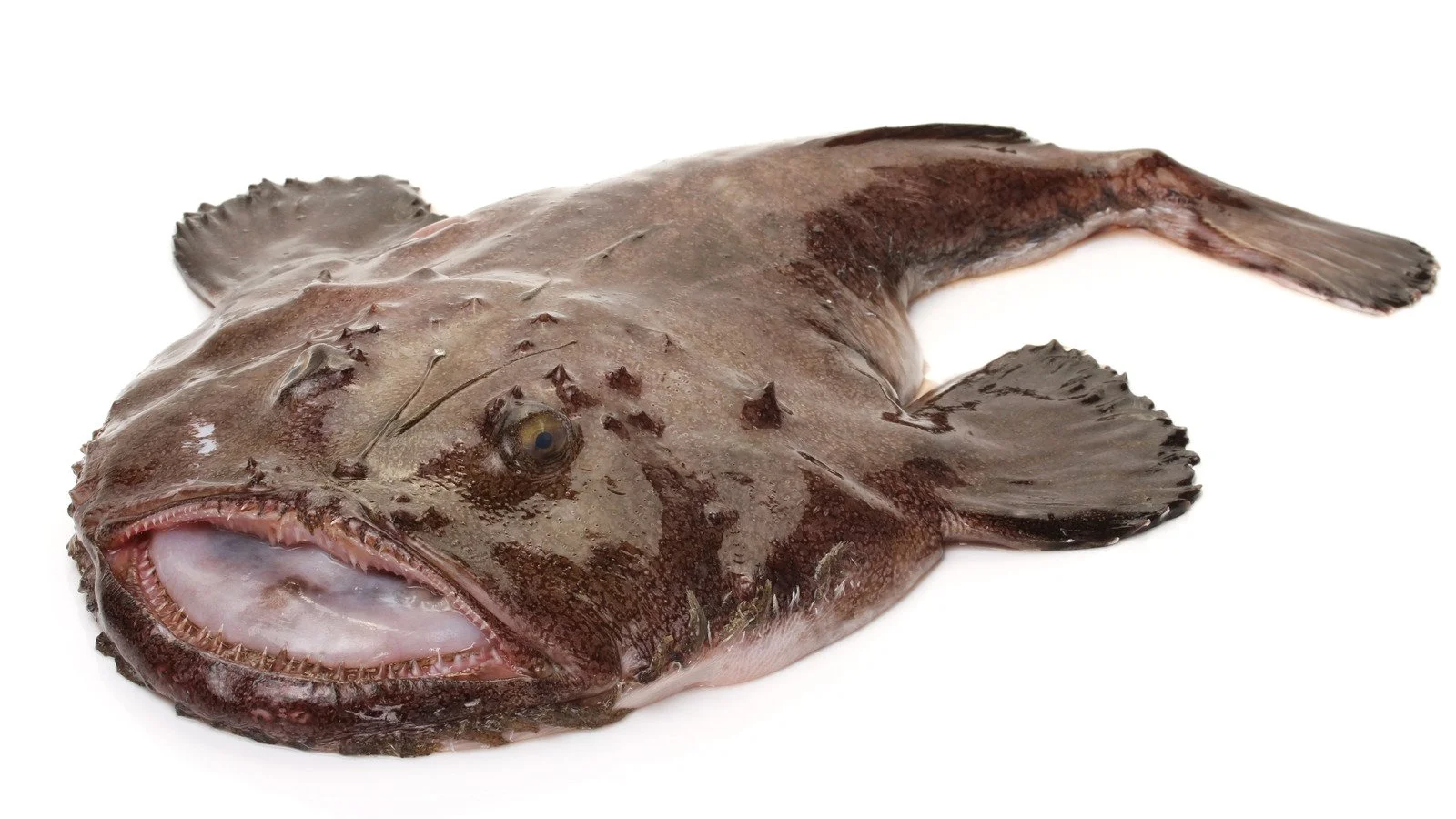Monkfish
The monkfish industry was developed by sea scallopers to make use of an underutilized resource. It is still a seasonal component of our catch.
Appearance
Monkfish have mottled dark brown to olive-green skin on top and whitish skin underneath.
They are described as tadpole-like in appearance, with a body that is mostly a broad head with a large mouth and a narrow, tapering body.
Biology
Female monkfish grow larger and live longer than male monkfish. Females live to at least 13 years and grow to more than 4½ feet long, while males only live about 7 years and grow to almost 3 feet long.
Males and females are able to reproduce when they reach about 14 inches and 16 inches long, respectively.
Monkfish spawn from February to October.
Females release large egg veils that can contain more than 1 million eggs.
These egg veils float near the surface along with the prevailing currents for 1 to 3 weeks (depending on temperature) until the veil disintegrates and the larvae hatch.
Monkfish migrate seasonally to spawn and feed.
They travel by slowly swimming or by using the sturdy base of their pectoral fins to walk.
Scientists speculate that their wing-like pectoral fins may be used to ride currents.
Monkfish are opportunistic feeders, eating whatever prey is most available at the time.
Larvae feed on zooplankton (tiny floating animals). Juveniles mostly eat small fish, shrimp, and squid.
Adults mainly eat fish, including other monkfish, but also feed on crustaceans, mollusks, seabirds, and diving ducks.
Monkfish ambush their prey—they use a modified spine on their head as a fishing pole and bait to lure small fish toward their mouths.
When the prey comes near, the monkfish takes a large gulp, which sucks the prey into its mouth and traps it behind rows of back-pointing teeth.
Large monkfish have few predators.
Predacious fish such as swordfish, sharks, and thorny skate prey on small monkfish.
Where They Live
Monkfish are found in the Northwest Atlantic Ocean from the Grand Banks and northern Gulf of St. Lawrence south to Cape Hatteras, North Carolina.
They can tolerate a wide range of temperatures and depths, from inshore waters down to nearly 3,000 feet.
Monkfish migrate seasonally to spawn and feed.
Photo Source: https://www.alimente.elconfidencial.com

